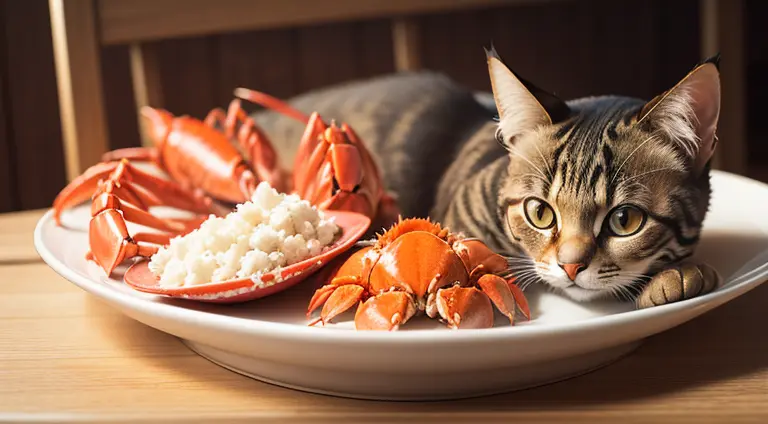When it comes to our furry feline friends, it’s essential to ensure they have a balanced and healthy diet. Many cat owners often wonder about introducing new foods into their pets’ diets, such as seafood. Crab, with its delicate taste and tender meat, might seem like a tempting choice. But can cats eat crab? In this article, we’ll delve into the world of feline nutrition and explore whether crab can be a safe and occasional treat for your beloved kitty.
Understanding a Cat’s Dietary Needs
1. The Basics of Cat Nutrition
Before we dive into crab as a potential addition to a cat’s diet, let’s understand what cats need to stay healthy. Cats are obligate carnivores, meaning their diet should primarily consist of animal-based proteins.
2. Essential Nutrients
Cats require essential nutrients like taurine, arginine, and arachidonic acid, which are primarily found in meat. These nutrients are crucial for their overall health, including heart and eye health.
3. Protein Requirements
Protein is a cornerstone of a cat’s diet, and they need a higher protein intake compared to many other animals. Protein supports muscle maintenance, tissue repair, and overall vitality.
Can Cats Safely Consume Crab?
4. Crab as a Protein Source
Crab meat is indeed a protein source, which might seem suitable for cats. However, it’s essential to consider some critical factors before offering it to your pet.
5. Potential Allergies
Cats can have allergies or sensitivities to various foods. Introducing crab to your cat’s diet can lead to allergies, which may manifest as digestive issues or skin problems.
6. Shell and Bones
Crab shells and bones can be a choking hazard for cats. If you decide to feed your cat crab, ensure it’s boneless and free from any sharp shell fragments.
7. Seasoning and Preparation
Many crab dishes are seasoned with spices and herbs that can be harmful to cats. It’s crucial to offer plain, unseasoned crab if you choose to share some with your pet.
8. Moderation is Key
Even if your cat enjoys crab, it should only be an occasional treat. The majority of their diet should consist of high-quality cat food specifically formulated for their nutritional needs.
How to Safely Introduce Crab to Your Cat
9. Consult Your Vet
Before introducing any new food to your cat’s diet, consult your veterinarian. They can provide guidance based on your cat’s individual health and dietary requirements.
10. Start Small
If your vet approves, start with a tiny amount of plain, cooked crab meat to see how your cat reacts. Monitor for any adverse effects.
11. Watch for Allergic Reactions
Keep a close eye on your cat for signs of allergies, such as itching, vomiting, or diarrhea. If any symptoms occur, discontinue feeding crab immediately.
12. Avoid Feeding Crab Regularly
Remember that crab should remain an occasional treat and not a regular part of your cat’s diet. Overindulgence can lead to digestive upset.
Certainly! Here’s the continuation of the article:
Additional Tips for Safe Feeding
13. Remove All Edible Parts
If you decide to treat your cat with crab, make sure to remove all edible parts from the shell, including any cartilage or connective tissues. These parts can be tough and difficult for your cat to digest.
14. Avoid Heavy Spices
As mentioned earlier, it’s best to offer plain crab to your cat. Avoid heavy spices like garlic, onions, or excessive salt, which can be toxic to cats and harm their health.
15. Monitor Water Intake
After giving your cat crab, keep an eye on their water intake. Cats can become dehydrated, especially if they consume salty foods like crab. Ensure they have access to fresh water at all times.
The Bottom Line
In the world of feline nutrition, it’s essential to strike a balance between offering treats and maintaining a cat’s overall health. While cats can enjoy a taste of crab from time to time, it’s crucial to approach it with caution, ensuring it’s safe, plain, and free from any harmful additives.
Remember that every cat is unique, and what might be suitable for one may not work for another. Consulting your veterinarian for personalized advice is always the best course of action when considering changes to your cat’s diet.
In summary, yes, cats can eat crab, but it should be treated as an occasional indulgence rather than a dietary staple. By prioritizing your cat’s well-being and following the guidelines mentioned in this article, you can ensure that your feline companion enjoys a safe and satisfying culinary experience.
Conclusion
In conclusion, cats can eat crab, but it should be done with caution. It’s crucial to prioritize your cat’s overall health and nutritional needs. Always consult your vet before making any significant changes to your cat’s diet and introduce new foods in moderation. While crab can be a tasty and occasional treat, it should not replace their regular cat food.
Frequently Asked Questions (FAQs)
1. Can I give my cat crab shells?
No, it’s not safe to give your cat crab shells. Crab shells can be a choking hazard, and they are not suitable for feline consumption.
2. Is it safe to feed my cat raw crab?
No, feeding your cat raw crab is not recommended. Raw seafood can contain harmful bacteria and parasites that can be harmful to cats. Always ensure crab is thoroughly cooked before offering it to your pet.
3. Can cats eat crab meat from canned crab?
Canned crab meat can be safe for cats, but it’s essential to check the ingredients. Make sure it’s plain, without added spices, seasonings, or preservatives.

4. What are the signs of a crab allergy in cats?
Signs of a crab allergy in cats can include itching, hives, vomiting, diarrhea, and difficulty breathing. If you suspect an allergy, consult your veterinarian immediately.
5. How often can I give my cat crab?
Crab should be an occasional treat for your cat, not a regular part of their diet. It’s best to consult your vet for guidance on the frequency of offering crab to your pet.

